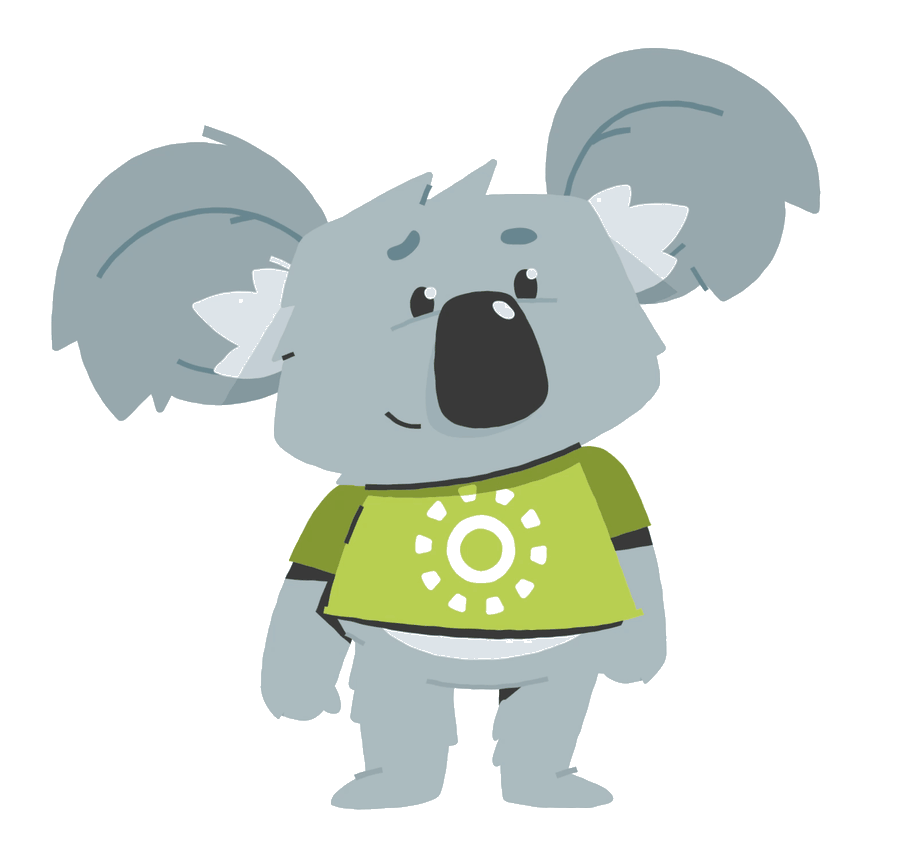
Subscribe to Kadince's Blog

D.L. Evans Bank’s Smart Strategy for Making a Big Community Impact

Community banks do more than just manage money—they can also be powerful forces for good in their communities. By giving back through donations, sponsorships, and employee involvement, financial institutions have a real chance to make a lasting impact.
D.L. Evans Bank is a great example of what that looks like. With smart giving strategies and a deep love for its community, this bank demonstrates how focused, intentional efforts can drive meaningful impact where it matters most.
Commitment to Community
D.L. Evans Bank is a $3.4 billion bank with 39 branches throughout Idaho and northern Utah. Since its founding in 1904, D.L. Evans Bank has prioritized one thing above all else: supporting the people and places it calls home.
In fact, one of the bank’s core values is Commitment to Community. This philosophy drives not just the bank’s donations, but how it builds relationships, makes lending decisions, and supports employees and the causes that matter most to them.
As the bank’s Senior Compliance Officer, Trevor Matthews, put it, “A strong community makes a strong bank. It’s not the other way around.”
And the proof is in the numbers. In 2024 alone, D.L. Evans Bank:
-
Logged 16,982 employee volunteer hours
-
Donated $694,567 in sponsorships and donations
-
Awarded $32,000 in scholarships
-
Supported 785 different organizations across its communities
Those are some pretty impressive numbers!
Strategic Giving Means A Strong Impact
Like most community banks, D.L. Evans has to be strategic with its giving. “Unlike some of the giant banks out there,” Trevor said, “we don’t have a seemingly unlimited budget or access to millions of dollars to donate each year. We have to be strategic and find ways to leverage our resources to make the biggest impact we can.”
One way the bank multiplies its impact is by partnering with the Federal Home Loan Bank (FHLB) of Des Moines through a special donation matching program. This partnership allows the bank to stretch its dollars even further, support more nonprofits, and address community needs better than it could alone.
The Federal Home Loan Bank system is composed of eleven regional banks that provide funding to member financial institutions. D.L. Evans Bank is part of the Federal Home Loan Bank of Des Moines, which covers 13 states around the country.
The 2025 donation match offered by the FHLB was a generous one—a $1.50 match to every $1 donated by the bank during a certain period of time. This means that by donating $110,000 of its own funds, D.L. Evans Bank was actually able to give $275,000 to its community.
These funds were split between the eleven following Utah organizations:
-
Box Elder Community Pantry: $12,500
-
Box Elder Family Support Center Inc.: $12,500
-
Cache Community Food Pantry Inc.: $6,250
-
Davis Arts Council Inc.: $25,000
-
Mountain Country Home Solutions: $25,000
-
Tabitha's Way: $37,500
-
United Way of Northern Utah: $25,000
-
Wasatch Homeless Health Care Inc.: $62,500
-
Weber Human Services: $31,250
-
YCC Foundation: $31,250
D.L. Evans Bank learned about this year’s donation match very late in the process. “Even though we only had a week to pull it off,” Trevor said, “we knew we wanted to participate. This donation match is a good way to leverage our resources to get the most benefit out to these organizations. That’s what our bank is all about: making a big impact in any way we can.”
A History of Giving
This isn’t the first year D.L. Evans Bank has made a big impact. In fact, the bank strives every year to make a difference and show its commitment to community in new ways.
From the very beginning, D. L. Evans Bank has made community its priority. The bank was built on the idea that local businesses should exist to serve local people—not the other way around. That legacy lives on through its deep investment in the places it serves. From sponsoring school teams to helping build a community center, the bank sees its role as personal, not just financial.
Trevor first learned of the FHLB donation match in 2023, and back then it was even higher than it is now. With the match, D.L. Evans Bank was able to donate $580,000 to approximately 20 organizations throughout Utah and Idaho. This included a significant $250,000 contribution to build a community center in Brigham City, Utah.
With its latest round of donations, D.L. Evans Bank hopes to continue building relationships with the nonprofits in its communities, engage employees, earn credit under the Community Reinvestment Act, and showcase its generosity.
Building Relationships with Nonprofits
D.L. Evans Bank believes that if a community is doing well, success will come for the bank. A strong community expands, has new businesses, has population growth, etc., all things that benefit a bank. “It’s a positive feedback loop,” Trevor said. “If we can make sure our communities are strong and thriving, then our bank will reap the benefits of that as well. It’s like the saying of how a rising tide lifts all boats.”
Even when the bank doesn’t have an FHLB match to meet, it typically gives anywhere from $500,000 to $700,000 in donations and sponsorships each year.
The bank believes that the better its relationships with nonprofits, the bigger difference these organizations can make, and the more the bank will grow.
D.L .Evans Bank’s Donations dashboard in Kadince
Getting the Team Involved
D.L. Evans Bank worked directly with local employees and branch managers to choose where donations should go (after an initial qualification process). “Basically,” Trevor said, “we relied on employees to tell us how to spend the money. We’re headquartered in southern Idaho. We don’t know what the needs are in Salt Lake County or Orem City, for example. By relying on the employees in those areas, we were able to have a much bigger impact than we otherwise could have.”
By getting the team involved, D.L Evans Bank can ensure that donations are aligned with actual community needs, not just going to the first nonprofit they hear about. It also helps employees feel a sense of pride and ownership in the bank’s community impact, as well as strengthens relationships between branches and local nonprofits.
Even beyond giving donations, D.L. Evans Bank expects its employees to be involved in their communities. These hours can come from something as simple as teaching a lesson at church or giving blood with the Red Cross. Or it can be part of an official volunteer event planned and hosted by the bank. The bank sets service goals and tracks hours with Kadince software, which makes it easy for volunteers to submit their hours and has greatly streamlined the way Trevor’s team manages these hours.
In fact, Trevor’s favorite Kadince feature is the services. “I used to comb through spreadsheets for hours and hours looking at just the bank’s services,” he said. “With Kadince, it takes me five minutes to look through all the services and organizations. I save so much time!”
Keeping the Community Reinvestment Act in Mind
While D.L. Evans Bank relied on employees to find nonprofits, that doesn’t mean just any nonprofit was accepted as a donation candidate. The FHLB had a few requirements that must be met, and Trevor’s team added a big one of their own.
To be eligible for a donation match, the FHLB required banks to donate to:
-
Nonprofits that support affordable housing, community services, or economic development
-
Nonprofits operating in eligible locations (in 2025, this included Utah, Hawaii, and certain U.S. territories)
However, Trevor’s team added one more requirement before choosing which nonprofits to support. The donations had to be likely to receive credit under the Community Reinvestment Act, or CRA.
The CRA was enacted in 1977 to ensure that banks meet the credit needs of their communities, especially those of low-and-moderate income individuals. To prove that it meets these needs, each bank must track its loans, donations, and services, and then report them while going through an exam.
Trevor used Kadince software to find a list of potential nonprofits the bank might support. Because D.L. Evans Bank uses Kadince to track and manage all donations, it was easy to pull a report of past nonprofits it has supported and cross-reference this list for CRA-eligibility. Trevor then shared this list with Utah branch managers for review. He also took suggestions for new nonprofits the bank hadn’t yet supported, and each branch had fun finding nonprofits they felt would benefit from a donation.
How Kadince Helps D.L. Evans Bank Make an Impact
Behind every impressive donation, volunteer hour, and sponsorship is a whole lot of coordination. That’s where Kadince software comes in.
D.L. Evans Bank uses Kadince to track, manage, and report its community engagement efforts and CRA data—specifically donations, volunteer hours, events, loans, and investments.
According to Trevor, “Before Kadince, we asked our employees once a year to tell us what service hours they did. We didn't get a very good response rate, and I often got one-word answers that required follow-up. Then we had to manually weed through those hours to figure out what might be CRA-eligible. With Kadince, I get the information I need upfront, and I can make an almost instantaneous CRA determination.”
D.L. Evans Bank’s Kadince volunteer hour form
On the donation side, Kadince makes it easy to split a donation between multiple branches. Trevor said, “Before, it was just me sending an email to all the different branch managers and asking them to sign off on their portion of a donation, and then trying to remember to keep that on file. Kadince keeps it all in one place, and I can always go back and see who approved what, which makes it super easy to track.”
Reporting is just as seamless. At the end of the year, Trevor sends reports to his senior management team showing service hours by branch and department, as well as donations by area. He said it’s easy to compare donations against budgets and see where they have room to give more—or where they need to pull back.
For anyone looking to improve how they track community involvement and CRA data, Trevor highly recommends Kadince. “My job is so much easier now with Kadince,” he said. You can schedule a demo to learn more and see the software in action.
Big Impact, Local Focus
D.L. Evans Bank proves that you don’t need a massive budget to make a meaningful difference—you just need a strong connection to your community and a smart approach to giving. By listening to employees, partnering with the right organizations, and using tools like Kadince to stay organized, this bank turns its values into real impact.
More than anything, D.L. Evans Bank proves that when you put community first, everything else falls into place. A strong community really does make a strong bank—and that’s something every bank should live by, and every consumer should consider when choosing a bank.
None of Kadince, Inc., its affiliates, or its respective employees, directors, officers, and agents (collectively, “Kadince”) are responsible or liable for any content or information incorporated herein. Read full disclosure.

Jaidyn Crookston | Content Manager, Kadince
More like this

Schedule a Demo with Morgan

Get a Proposal from Morgan
Thanks for your interest in Kadince software. I’ll email you a proposal within four (4) Kadince business hours (sometime before ).
 Have any questions? I'm happy to help!
Have any questions? I'm happy to help!


